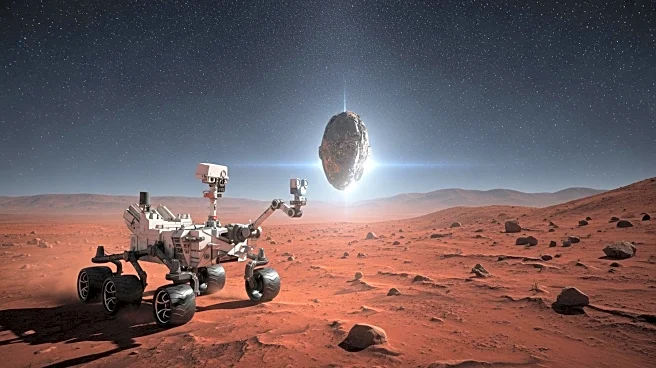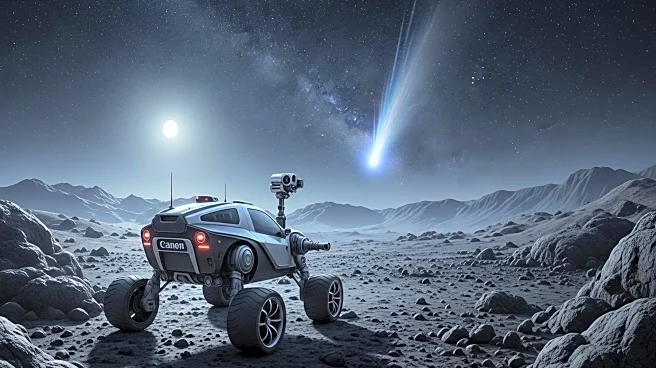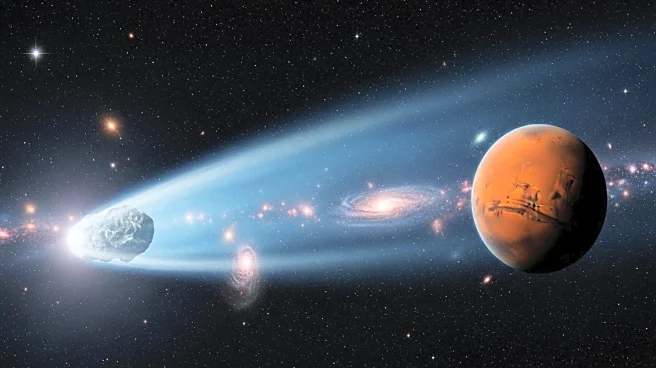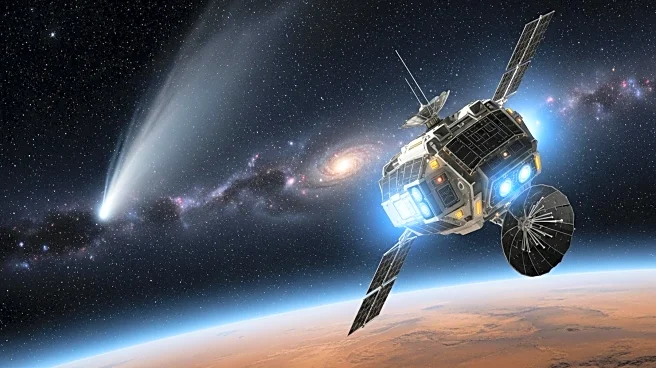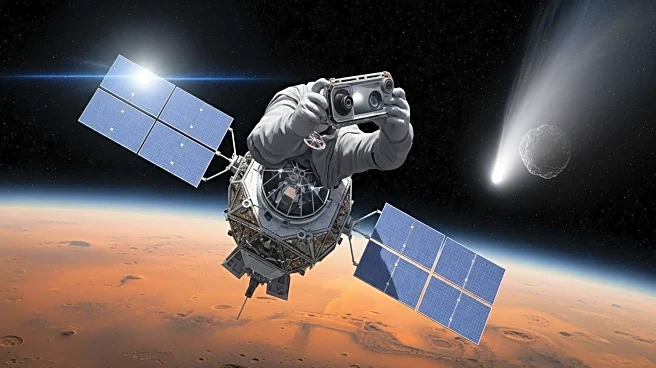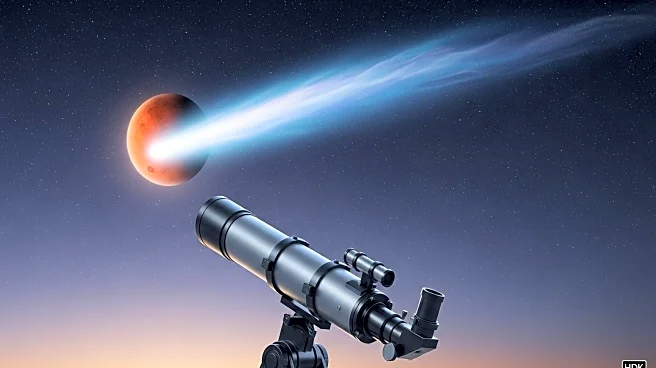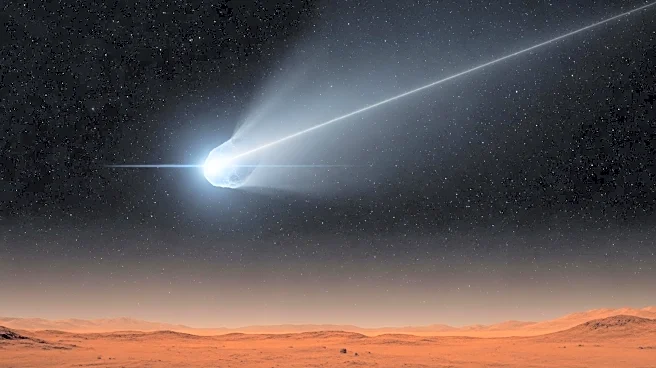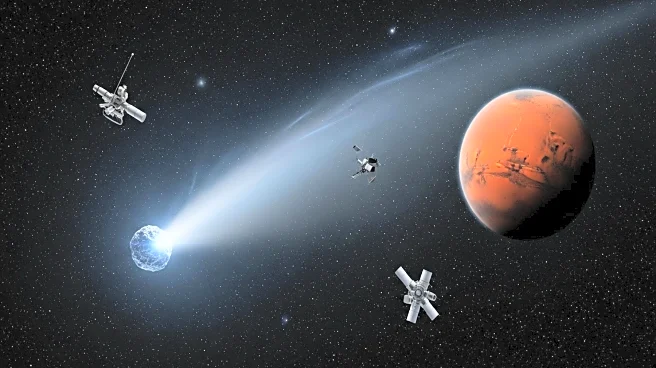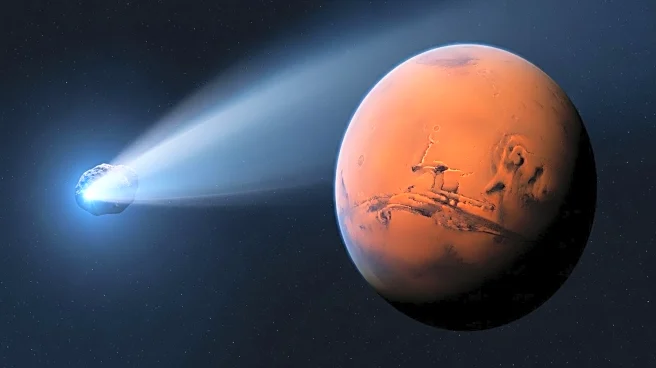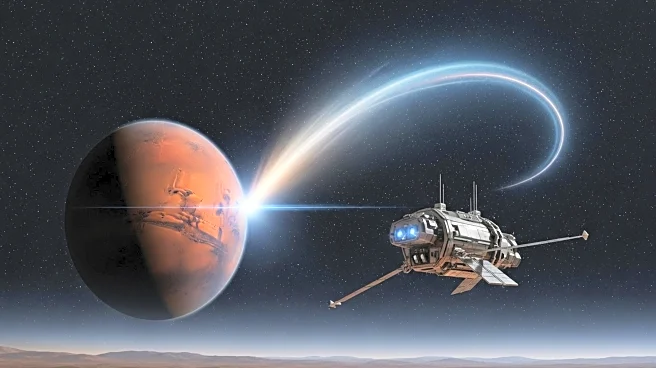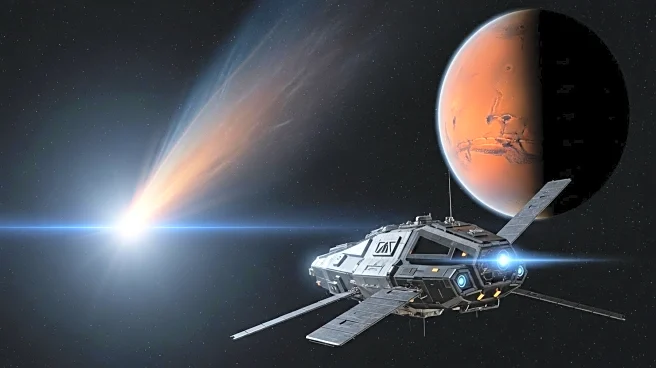What is the story about?
What's Happening?
Several spacecraft have captured images of the interstellar object 3I/ATLAS, which is currently on the opposite side of the sun from Earth. This comet, originating from outside Earth's solar system, has been observed by Mars orbiters and ground-based telescopes. The James Webb Space Telescope and SPHEREx have studied its physical properties and chemical makeup. The comet's tail has grown as it approaches the sun, and further observations are planned by the ESA's Jupiter Icy Moons Explorer. 3I/ATLAS is one of only three known interstellar objects in Earth's cosmic neighborhood.
Why It's Important?
The study of 3I/ATLAS offers a unique opportunity to understand planetary material from another star system. Unlike comets bound to the sun's gravity, 3I/ATLAS is on a hyperbolic orbit, allowing it to escape the solar system. This makes it a valuable subject for astronomers and space agencies aiming to study interstellar material. The observations could provide insights into the composition and behavior of celestial bodies from outside our solar system, enhancing our understanding of cosmic phenomena and potentially informing future space exploration missions.
What's Next?
Further observations of 3I/ATLAS are scheduled between November 2-25 by the ESA's Jupiter Icy Moons Explorer. The comet is expected to be in a very active state during this period, following its closest approach to the sun. However, due to its position on the opposite side of the sun, data from these observations may not be received until February. The comet will reappear in December, becoming visible from Earth once again, allowing for continued study and analysis by astronomers.
Beyond the Headlines
The discovery and study of interstellar objects like 3I/ATLAS challenge existing models of cometary behavior and solar system dynamics. As scientists gather more data, they may uncover new insights into the processes governing interstellar travel and the formation of celestial bodies. This research could lead to advancements in our understanding of the universe's structure and the potential for life beyond Earth.
AI Generated Content
Do you find this article useful?


